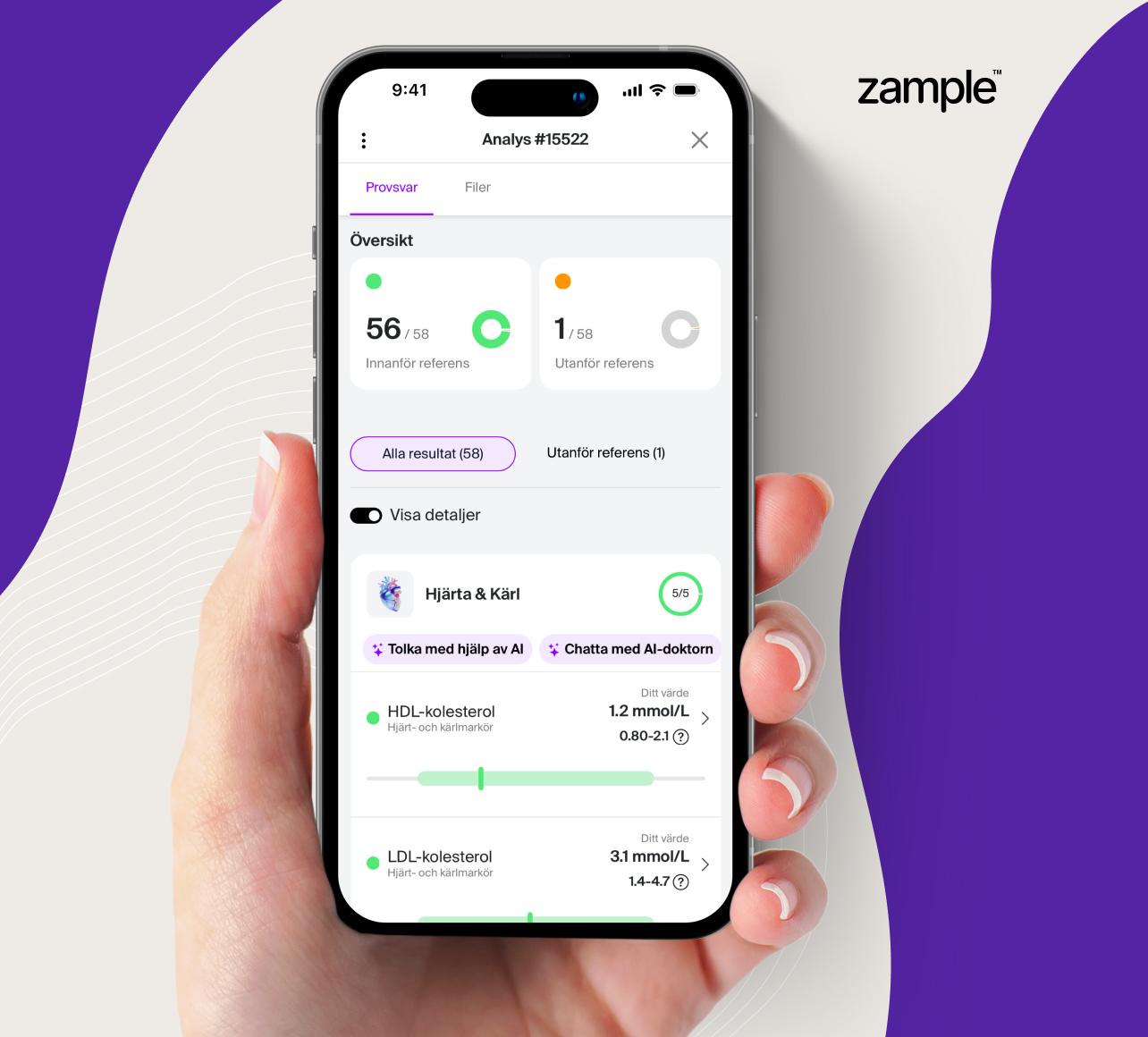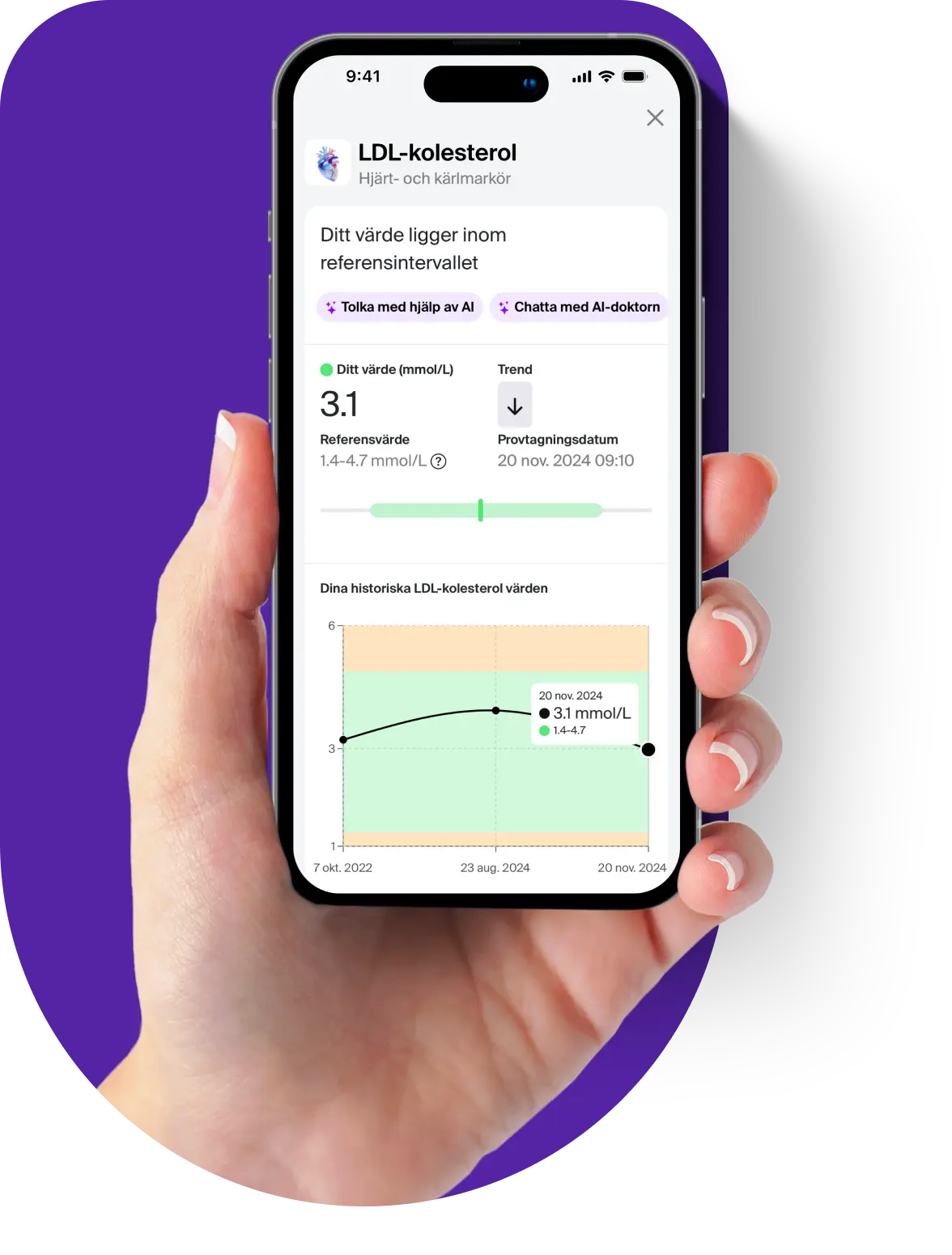Blood clot test – D-dimer coagulation test
This blood test analyzes the level of D-dimer in the blood – a breakdown product formed when the body dissolves a blood clot. The analysis is mainly used when blood clots are suspected, such as deep vein thrombosis (DVT), pulmonary embolism (PE) or other conditions with increased coagulation activity. It is a sensitive screening test that can help rule out serious conditions without the need for direct imaging.
When deep vein thrombosis or pulmonary embolism is suspected
The D-dimer test is recommended for acute symptoms that may indicate a blood clot, such as unexplained swelling or pain in a leg, chest pain, shortness of breath or prolonged cough. A negative D-dimer can strongly exclude the presence of a blood clot with low clinical suspicion, which reduces the need for further investigations.
D-dimer is particularly useful as part of a structured investigation, often in conjunction with clinical decision aids such as the Wells score. It can also be used to monitor patients with known coagulation disorders or after major surgical procedures.
What does a D-dimer test result show?
A low or normal value means that there is most likely no active blood clot formation in the body. An elevated value indicates that the body has recently broken down fibrin – which can occur in the case of a blood clot, but also in other conditions such as infection, trauma, cancer, pregnancy or after surgery.
Because D-dimer is very sensitive but not specific, an elevated result should always be assessed together with your symptoms and any further investigation.
Important information before taking the sample
No special preparation is required for a D-dimer test. It can be performed at any time of the day and is not affected by fasting. In case of acute symptoms, the test should be combined with a clinical assessment together with the treating physician.
Reference values for D-dimer
- Negative: < 0.50 mg/L FEU (fibrinogen equivalent units)
- Elevated: ≥ 0.50 mg/L FEU
Note! Reference values may vary slightly depending on the laboratory, age and sampling method. In older patients, some elevation may occur without a blood clot being present.




























